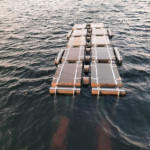Category Archives: GDS Engineering Services
Underwater radiated noise (URN) of your platform
The increase in shipping activity globally has resulted in an increased awareness of impacts on the marine environment. Effects of noise pollution, especially on marine life, have become highly prominent. Marine life is extremely sensitive to noise pollution. Due to their extreme reliance on underwater sounds for basic life functions like searching for food and mate and an absence of any mechanism to safeguard them against it, underwater noise pollution disrupts marine life (Singla, 2020). In short, marine animals depend on sound to live, making and listening to it in various ways to perform various life functions (US Bureau of Ocean Energy Management, 2014).
Noise travels much more in water, covering greater distances than it would do on land while travelling through air. Underwater sound has both pressure and particle motion components and hearing can be defined as the relative contribution of each of these sound components to auditory detection (Popper AN, 2011). Sounds radiated from ships are among the underwater noise sources. Among shipborne Underwater Radiated Noise (URN) sources are the following:
● Propeller’s rotational turn and the blades hitting to water flow lines
● Propeller’s cavitation
● Ship hull structure’s interaction water (fluid-structure interaction)
● Mechanical noises from onboard machinery
All of these noise sources are radiated to underwater from ships, especially when the ship speed is at higher rates, i.e. above 15 knots.
When a Powership is considered, out of the 4 aforementioned noises, only mechanical noise sources are of concern as there are no noises that emanate from the other three sources because the Powership is docked. Mechanical onboard noises are still of concern and therefore need to be evaluated and tested for the assessment of their potential negative effects to marine life.
At GDS Engineering R&D, Inc., we provide engineering and research services for investigating the ship underwater noise emittance and limitations.
We have established a group of engineers and academicians, called “GDS Team”, to conduct for doing an initial research on the subject. Academic staff is selected from Istanbul Technical University (ITU) Marine Equipment Test Center (METC), which is a directorate established under the ITU Rectorate. Also, GDS Engineering R&D is established in the university research park with the permission of ITU Rectorate by laws. Consisting of both academic and sectoral subject matter experts, the GDS Team hereby submits this research and evaluation paper.
Our study reflects that there has been an increase in academic and scientific studies, in the last decade, with regards to shipborne noises and their effect on marine life. Our research indicates that the International Maritime Organization (IMO) Marine Environment Protection Committee has also held a subject meeting in 2019 and published a report (IMO MEPC 74/INF.28, 2019). The IMO report indicates that there is no requirement or a strong guidance document yet published with regard to Underwater Radiated Noise (URN):
“The report provides an overview of URN issues but is not intended as a complete guide to this very complex subject.” (IMO MEPC 74/INF.28, 2019).
Similar studies show that there are no standard thresholds established and currently required as design criteria for commercial ships.
This research study focuses on the following main areas:
- Overview of previous studies on the subject.
- Evaluation of Shipborne Machinery Design and Noise Radiation using computer simulations.
- Evaluation of Karpowership design and considerations made countermeasures taken for the vibrations and noise including URN, using the state-of-the-art noise reduction and isolation techniques.
Animals will only respond directly to sounds they can detect. Marine animals depend on sound to live, making and listening to it in various ways to perform various life functions (US Bureau of Ocean Energy Management, 2014). The effect of underwater noise pollution is more painful than anything else for the animals. Most animals are alarmed by the alien sounds. The deaths can occur due to hemorrhages, changed diving pattern, migration to newer places, and damage to internal organs and an overall panic response to the foreign sounds. There is also a disruption in normal communication between marine animals as a result of underwater noise pollution. This means animals prone to noise pollution are unable to call their mates, look for food or even make a cry for help under such circumstances (Singla, 2020).
Figure 1 shows the frequency ranges produced by various marine mammal groups (US Bureau of Ocean Energy Management, 2014). The relative noise frequency bands created by various human noise sources are indicated. It also shows that all human made noises that affect various undersea life with the respective frequency ranges. Due to this fact shown with this figure along with similar studies and reports discusses in the upcoming sections, there is more attention to do research on marine mammals and industrial noises to understand how these noises affect the mammal groups.
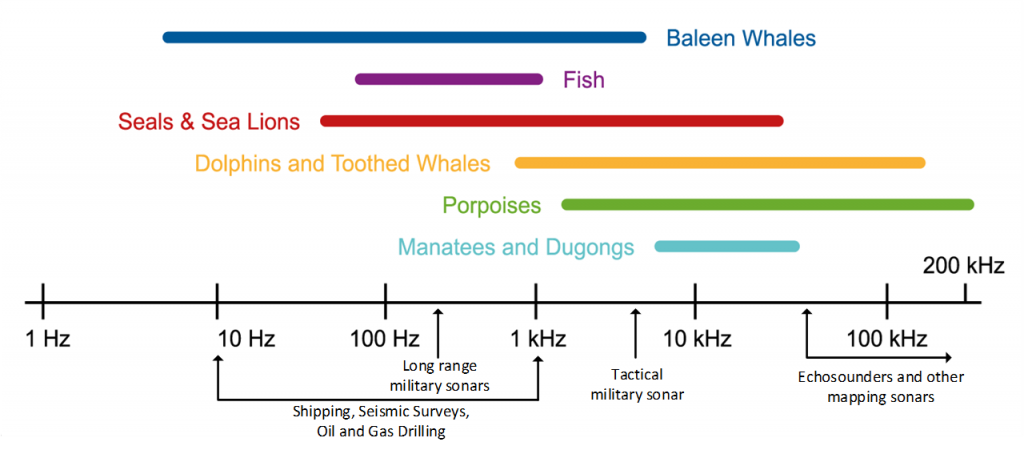
.
Behavioral responses of marine mammals to noise are highly variable and dependent on a suite of internal and external factors. Internal factors include (Ocean Noise and Marine Mammals, 2003)
- individual hearing sensitivity, activity pattern, and motivational and behavioral state at time of exposure;
- past exposure of the animal to the noise, which may have led to habituation or sensitization;
- individual noise tolerance; and
- demographic factors such as age, sex, and presence of dependent offspring.
External factors include
- non-acoustic characteristics of the sound source, such as whether it is stationary or moving,
- environmental factors that influence sound transmission,
- habitat characteristics, such as being in a confined location, and
- location, such as proximity to a shoreline.
Many marine animals like the fish (rockfish, herring, san eel, cod, blue whiting etc.) show signs of extensive damage to their ears upon exposure to seismic air guns even up to several kilometers. Exposure to noise during embryonic stage increases sensitivity of fish to noise impact, increasing the mortality rates at time of birth and development of genetic anomalies. The migration to new areas not only affects the marine diversity balance but indirectly affects humans too. A decreased catch in many fish species like herring, cod and blue whiting especially in areas susceptible to noise pollution from ships has been noticed (Singla, 2020).
Sensitivity of various marine animals to ocean noise pollution is varying. While cetaceans like whales and dolphins may show a greater resistance, soft shelled species like mollusks, prawns, fish, etc. are much more sensitive. However, it is important to note that as many as 24 cetacean species have shown negative effects of noise pollution in the ocean. In all about 55 marine species have been noted to have suffered due to exposure to sound of varying frequencies. These include sperm whale, grey whale, mink whale, pygmy sperm whale, killer whale, sea bass, pink snapper, goldfish, cod, haddock, bluefin tuna, squid, lobster, brown shrimp etc. (Singla, 2020).
Mass stranding of giant squids in coastal areas of Spain between 2001 and 2003 showed how grave the implications of noise pollution in marine life can be. These beachings can occur merely hours after such an exercise. Dislocation or movement of marine animals to newer locations is also one of the many ocean noise pollution effects. While this may seem like a survival mechanism, studies conducted for a follow up on these animals isn’t that promising as most animals fail to acclimatize in the new environment, not to mention loss of diversity in many regions (Singla, 2020).
Sound is an extremely efficient way to propagate energy through the ocean, and marine organisms have evolved to exploit this property. Fish utilize sound for navigation and selection of habitat, mating, and communication (Bass & McKibben, 2003) (Simmonds & MacLennan, 2008).
There is a reason why the ocean is called the ‘silent world’. In this world, where sounds of their own exist, there is no room or rather any need for foreign sounds to breach the harmony of their world. Studies are being conducted to understand the effects of noise pollution on marine life in a much better way. But until a safe mechanism can be thought of which will ensure that marine animals do not continue to commit as much as mass suicide due to human errors, safety through prevention is out best shot at keeping the sanctity of this ‘silent world’ intact (Singla, 2020).
A Summary of GDS Ship Engine Room Simulator (ERS) charateristics to fit into your training program
With our product, certified by the Nippon Kaiji Kyokai (Class NK) as a Class A (Full Mission) Engine Room Simulator, our purpose is to ensure that the instructors can efficiently utilize this training environment in their Maritime Education and Training (MET) programs and that the trainees can have a productive training.
Developed by GDS Engineering R&D; our product called Ship Engine Room Simulator (SERS);
- Meets IMO STCW 2010 requirements (with Manila Amendments).
- Supports training programs using IMO Model Course 2.07 (2017 Edition).
- Certified by Class NK for meeting both IMO STCW 2010 and Model Course 2.07.
- The simulator is the digital twin model of a real ship (ref. to User Manuals for complete references and details)
- Configurable for an individual training study on a Workstation/PC
- Configurable for group studies with distributed system configuration using distributed computers and large touch-screen panels as well as association of hardware consoles and panels.
- Provides automated training reports.
- Includes high voltage training functions
- Simulates all engine room machinery and systems with over 50 Graphical User Interface (GUI) Panels.
- All systems are interfaced with all engine room parameters, any change in any parts of the systems is immediately affect the other systems, as in reality!
- Emphasizes all aspects of the electrical operations with realistic functions.
- Easy graphical user interfaces that considerably decrease the time for learning and allowing instructors to directly move on to the training objectives.
- Includes 5 User Manuals, allowing to apply the manuals to training programs directly.
- Includes Exercise Workbooks for students to come to the simulator center with their study books. When books and user manuals are incorporated, it provides a similar work studies in real ships.
- Exercise Book I is to use in the Operational Level of STCW 2010 training / competency levels. There are more than 10 example exercises are provided; already meeting the STCW objectives.
- Exercise Book II is to use in the Management Level of STCW 2010 training/ competency levels. There are more than 10 example exercises are provided; already meeting the STCW objectives.
- Engine room systems are simulated with high resolution rendered components providing easily readable GUIs on screens, which considerably decrease the learning time and moving on to the training subjects.
For more information, clisk here to read the details of the GDS ERS in our ERS product page. https://www.globaldynamicsystems.com/
or watch our YOUTUBE CHANNEL for more information with some example videos.
TÜBİTAK Projesi ile Dalga Enerjisinden Elektrik Üretilecek
AQUA VISION ENERGY firması tarafından TÜBİTAK projesi olarak geliştirilen “Açık Deniz ve Okyanus Dalga Enerjisi Dönüştürücü Sistemin Geliştirilmesi ve Prototip Üretimi” adlı çalışmada sona gelindi.
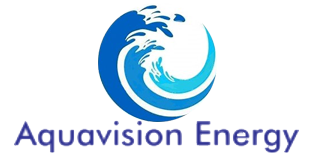
TÜBİTAK desteği ile off-shore (açık deniz) dalga jeneratörü geliştiren Sayın Gemi Makineleri İşletme Mühendisi Özer Çakır’ın cihazının ileri testleri İstanbul Teknik Üniversitesi Denizcilik Test Uygulama ve Araştırma Merkezi (İTÜ DETAM) Tuzla yerleşkesinde gerçekleştirildi. Teknolojinin 2 yıl içerisinde ticari kullanıma girebileceği bilgisini veren Çakır, geliştirdiği teknolojinin dünyadaki rakiplerine kıyasla çok daha kısa sürede kendini amorti edebileceği bilgisini verdi.
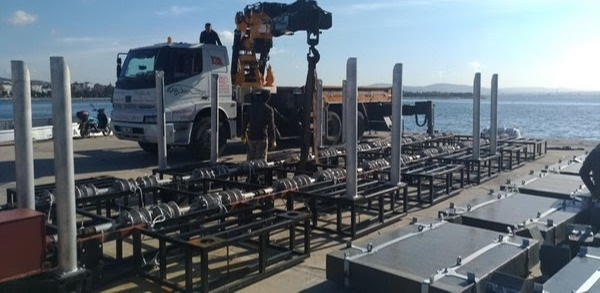
25 yıldır okyanus aşırı taşımacılık yapan gemilerde baş mühendis olarak çalışan, Gemi Makineleri İşletme Mühendisi Özer Çakır, dalga enerjisini elektrik enerjisine çeviren bir teknoloji geliştirdi.
Sabah gazetisine röpörtaj veren Özer Çakır, “Dalga enerji yoğunluğu rüzgara göre 2 kat, güneş enerjisine göre 10 kat daha yoğundur. Rüzgar ve güneş enerjisi yıllık kullanım oranı yüzde 30-35 iken yılda ortalama 120-130 gün yararlanılabilir. Dalga enerjisinin yıllık kullanım oranı yüzde 80-90 olup yılda ortalama 300-320 gün yararlanılabilir. Enerji halısı adını verdiğimiz sistemimiz, çalışma döngüsünde emisyon üretmez, ürettiği 13 KWH enerji için çevreye 1 ağacın bir günlük katkısına eş değer katkı sağlar. Enerji halısı 1 KW enerji için güneş panellerine göre onda 1, rüzgar türbinlerine göre de onda 5 oranında daha az bir alana ihtiyaç duyar” dedi. 11.11.2021 tarihli SABAH gazetesi haberi için tıklayınız.
MAVİ VATANDAN ENERJİ ALABİLİRİZ
Dalga enerjisinin rüzgar ve güneş enerjisine nazaran çok daha yoğun bir potansiyele sahip olduğunu belirten Çakır, “Ülkemizde yerleşim alanlarının dışında kalan 1652 kilometrelik sahil şeridinde ve kendi karasularımızda, mavi vatan sathında, yerli ve milli bir tasarım ile geliştirilen çevrim sistemimiz, kendi denizlerimizdeki enerjiyi kullanılabilir hale getirecektir.
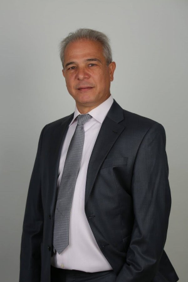
Gemi Makineleri İşletme Mühendisi Özer Çakır‘ın AQUA VİZYON ENERJİ firmasındaki bu çalışmasına;
Dr. İsmail Çiçek, İTÜ DETAM, Merkez Müdürü
Gemi Makineleri İşletme Mühendisi Adem Güleryüz dayanımlı mekanik üretimler, entegrasyon ve testler konusunda,
Elk. Elektronik Müh. Serkan Sezen ve Fuat Kılıç, sistem elektrik ve kontrol konularında,
Gemi Makineleri İşletme Mühendisi Doç. Dr. Alper Kılıç, deniz yapıları konusunda, ve
İTÜ Öğretim Üyesi ve İTÜ DETAM Merkez Müdürü Dr. İsmail Çiçek, optimizasyon ve verim konularında
projeye destek vermişlerdir.
Özer Çakır Bey’i başarısından dolayı tebrik eder, sanayi uygulamalarına örnek olması ve projenin başarılı bir şekilde hayata geçirilmesini dileriz.
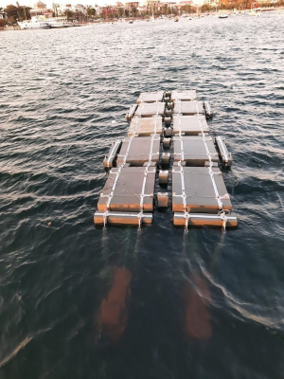
PROJE KÜNYESİ
- Proje Adı: Açık Deniz ve Okyanus Dalga Enerjisi Dönüştürücü Sistemin Geliştirilmesi ve Prototip Üretimi
- Proje Türü: TÜBİTAK Projesi (1507), 2020-2021
- Proje Yürütücüsü: Özer Çakır, Gemi Makineleri İşletme Mühendisi
PROJE ÖZETİ
Dalga enerjisi rüzgar ve güneş enerjisine nazaran çok daha yoğun bir potansiyele sahiptir. Ülkemizdeki dalga enerjisi potansiyeli kullanımı ile, yerleşim alanlarının dışında kalan 1652 kilometrelik sahil şeridi ve karasularımızda, mavi vatan sathında, yerli ve milli bir tasarım ile geliştirilen çevrim sistemi, Türkiye denizlerimizdeki enerjiyi kullanılabilir hale getirecektir.
Fikir, Proje Yürütücüsü Gemi Makineleri İşletme Mühendisi Sayın Özer Çakır tarafaından düşünülmüş ve projeye dönüştürülmüştür. Proje ile önerilen teknoloji dünyadaki rakiplerine kıyasla daha avantajlı olup sistemin öncelikle kendi sektöründeki diğer sistemlerin amorti süreleri ile karşılaştırması yaılacaktır. Sektörde kendini en kısa sürede amorti eden sistem yaklaşık 12 yıl ile Oscillating Water Columns olup diğer sistemler için bu süre daha da fazladır. Bu sistem ise 7-8 yıllık bir sürede kendini amorti edebileceği şekilde tasarlanıp optimize edilmiştir.
Rakiplerinden farklı olarak sistem, deniz yüzeyinde dalgaların gücüne ve hareketlerine bir arayüz olarak kullanılmış, bu arayüz sayesinde dalga enerjinin döngüsü sağlanmıştır. Yüzey üzerindeki tüm dalga etkileri az kayıp ile enerjiye çevirebilebilmesi için optimizasyon çalışması yapılmış, dönüştürebilen enerji miktarı rakiplerden daha fazla olduğu gösterilmiştir. Sistemi oluşturan malzeme maliyetlerinin düşük olması, sistemin toplam kurulum maliyetini de rakiplerine göre avantajlı hale getirmiştir. Sistemin tasarımsal özelliği sayesinde beklenmedik dalga etkilerine karşı dayanımlı olması istikrarlı ve düzenli çalışması sağlanmıştır. Ayrıcai diğer enerji kayaklarına bakıldığında, güneş pilleri için amorti süresinin 5 yıl civarında, rüzgar türbinleri için ise 7 yıl civarında olduğu düşünülerek çalışılmıştır.
